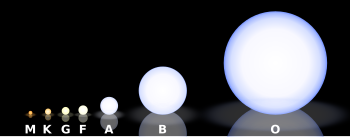
In astronomy, the G-dwarf problem refers to the apparent discrepancy in the distribution of metallicity levels in stars of different populations as compared to closed box models of galactic chemical evolution. According to closed box models, which represent galaxies without outside non-metallic material inflow, the distribution of metallicity levels in stars should follow a logarithmic curve. This amounts to high and low mass stars having the least metallicity, with G-type stars inbetween. However, these models are inconsistent with Milky Way observations. Other galaxies have been shown to have the same problem. The name comes from G-type stars, which are bright enough to be studied easily, yet are most often found unevolved. This provides an extensive look at relatively young stars. Despite this, the G-dwarf problem has also been observed in K and M dwarfs (the M dwarf problem).
See also
References
- Caimmi, R. (2008). "The G-dwarf problem in the Galaxy". New Astronomy. 13 (5): 314–339. arXiv:0712.1985. Bibcode:2008NewA...13..314C. doi:10.1016/j.newast.2007.11.007. S2CID 14648021.
- Greener, Michael J.; Merrifield, Michael; Aragón-Salamanca, Alfonso; Peterken, Thomas; Andrews, Brett; Lane, Richard R. (30 January 2021). "SDSS-IV MaNGA: the "G-dwarf problem" revisited". Monthly Notices of the Royal Astronomical Society: Letters. 502 (1): L95–L98. arXiv:2101.11022. doi:10.1093/mnrasl/slab012.
- Woolf, Vincent M.; West, Andrew A. (14 February 2012). "The M Dwarf Problem in the Galaxy". Monthly Notices of the Royal Astronomical Society. 422 (2): 1489–1494. arXiv:1202.3078. Bibcode:2012MNRAS.422.1489W. doi:10.1111/j.1365-2966.2012.20722.x. S2CID 119297698.
- Bjarne Rosenkilde Jørgensen, “The G Dwarf Problem: Analysis of a New Data Set,” Astronomy & Astrophysics 363, November 2000, 947
This article about stellar astronomy is a stub. You can help Misplaced Pages by expanding it. |